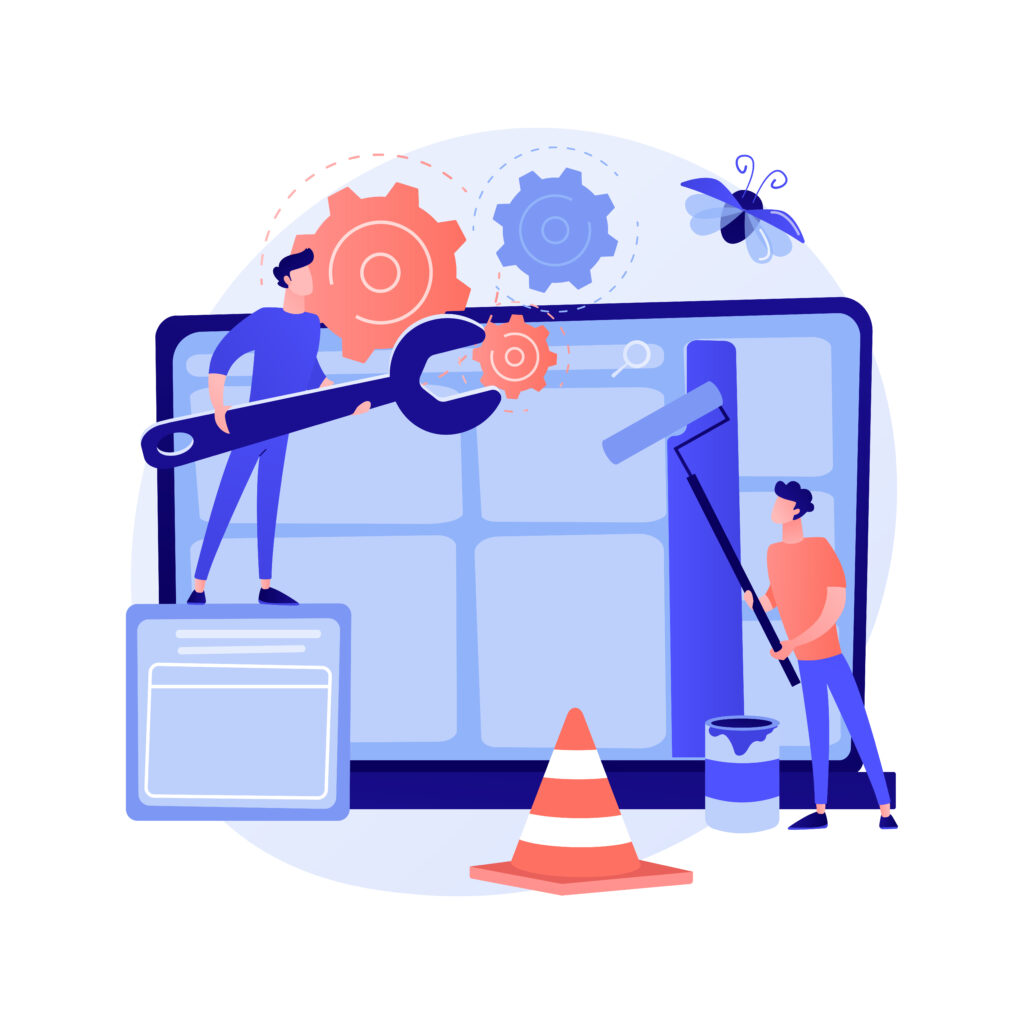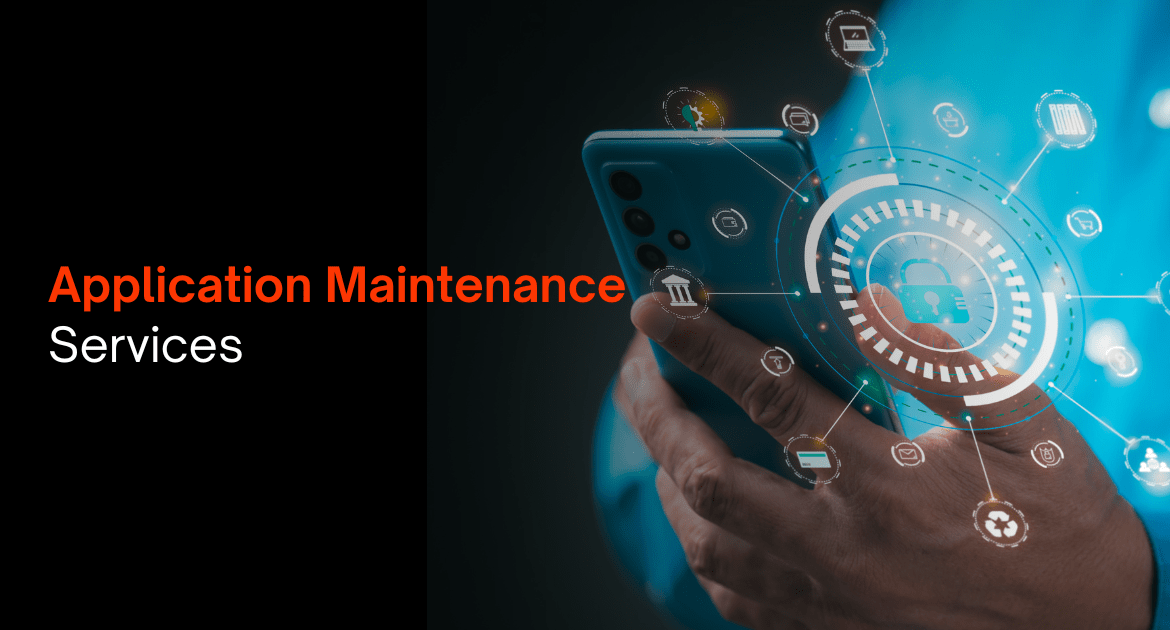Keep Your Application Running Smoothly and Securely with Application Maintenance Services!
Think about this: Is your application performing at its best, or is it causing problems for your business?
In this guide, we’ll break down what application maintenance services are and why they’re so important. You’ll find out how these services can make your app last longer and work better. Keep reading to see how application maintenance services can turn challenges into chances for growth and success!
Understanding Application Maintenance Services
Application maintenance services keep your software running smoothly after it’s been launched. They ensure your app stays functional, secure, and up-to-date with the latest technology. Instead of just fixing issues as they arise, maintenance helps your software continually meet your needs and those of your users.
Comprehensive Overview of Application Maintenance Services
Application maintenance is crucial for ensuring that software remains functional, secure, and aligned with user needs over time. It involves various activities aimed at keeping an application in top shape, addressing issues, and enhancing its performance. Here’s a consolidated view of the key aspects of application maintenance:
Bug Fixing and Issue Resolution
- Corrective Maintenance: Addresses bugs and issues that arise after the application is live.
- Functional Bugs: Impact the operation of specific features.
- Performance Bugs: Slow down the application and affect user experience.
- Security Bugs: Pose risks to data integrity and user safety.
Updating for Compatibility and Optimization
- Adaptive Maintenance: Involves updating the app to ensure compatibility with new updates and technologies, such as new operating systems.
- Performance Monitoring: Tracks key metrics like load time and scalability to ensure smooth application performance.
- Optimization Techniques: Includes code refinement and caching to enhance speed and efficiency.
Enhancing Features and User Experience
- Perfective Maintenance: Focuses on adding new features or improving existing ones based on user feedback.
- UX Improvements: Regular updates to the interface and features based on user feedback to maintain a user-friendly experience.Gather user feedback and ensure accessibility.
Preventing Problems and Ensuring Security
- Preventive Maintenance: Aims to stop issues before they start by updating and optimizing the app regularly.
- Security Updates and Patch Management: Involves regular security updates, encryption of sensitive data, and strong user authentication to protect against evolving cyber threats.
Compliance and Regulatory Updates
- Compliance Practices: Ensures the application adheres to industry regulations and standards through regular audits and compliance checks. Maintain audit trails and conduct routine audits to stay aligned with standards.

Why Application Maintenance Services Are Important
• Performance: Regular maintenance keeps your app running smoothly, reducing downtime and interruptions.
• User Experience: Fixing bugs and making improvements based on feedback makes users happier and keeps them coming back.
• Security: Ongoing updates and patches are essential for protecting your application from new security threats.
• Cost Efficiency: Regular care can prevent costly repairs and help your application last longer.
• Adaptability: As your business evolves, your application needs to keep up. Maintenance ensures your software stays current with these changes.
Best Practices for Effective Application Maintenance Services
Proactive Monitoring and Issue Detection
Preventing issues before they arise is the hallmark of effective application maintenance. Proactive monitoring tools can identify potential problems early, allowing for quick resolution.
Monitoring Tools:
- Application Performance Management (APM): Tools like New Relic provide real-time insights into application health.
- Log Management: Systems like ELK Stack help track and analyze application logs for issues.
Regular Software Audits
Conducting regular audits of your application’s codebase, performance, and security ensures it remains in optimal condition. These audits help identify inefficiencies and vulnerabilities that may have been overlooked.
Types of Audits:
- Code Audits: Reviewing the codebase for optimization opportunities.
- Security Audits: Evaluating the application’s defenses against potential threats.
User-Centric Maintenance
Prioritizing user experience in your maintenance strategy is key to the success of your application. Regularly collecting and acting on user feedback helps ensure the application continues to meet user needs.
Gathering User Feedback:
- Surveys: Directly ask users about their experience.
- Analytics: Track user behavior to identify areas for improvement.
Efficient Issue Tracking and Resolution
A robust issue tracking system is essential for managing and prioritizing maintenance tasks. Tools like JIRA and Trello can help streamline this process, ensuring that issues are addressed promptly.
Collaboration Between Development and Maintenance Teams
Close collaboration between your development and maintenance teams ensures that the application is designed and maintained with long-term success in mind. This collaboration can help prevent issues from arising and ensure that updates are smoothly integrated.
Collaborative Tools:
- Version Control Systems: Git helps manage changes and facilitates collaboration.
- CI/CD Pipelines: Automating testing and deployment processes for efficient maintenance.
How SimpleLogic Can Drive Your Application Maintenance Success
At SimpleLogic.IT, we understand the critical role that software applications play in your business’s success. Our Application Maintenance Services are designed to keep your applications running at peak efficiency, ensuring that you can focus on what you do best – growing your business.

We take a proactive approach to application maintenance, focusing on continuous improvement and strategic updates. Our team of experts is dedicated to providing the highest level of service, ensuring that your applications are always up-to-date, secure, and optimized for performance.
Why Choose SimpleLogic?
- Expertise: With years of experience in the industry, we have the knowledge and skills needed to manage even the most complex applications.
- Customization: We tailor our services to meet the unique needs of your business, ensuring that you get the most value from your investment.
- Support: Our 24/7 support team is always available to assist you with any issues that may arise, minimizing downtime and ensuring that your applications remain operational.
Common Challenges in Application Maintenance and Solutions
Managing Legacy Systems
Legacy systems pose a significant challenge due to outdated technology and lack of documentation. However, with the right approach, these systems can be effectively maintained and modernized.
Solutions for Legacy Systems:
- Documentation: Create documentation as you work to make future maintenance easier.
- Incremental Updates: Modernize the system gradually rather than overhauling it entirely.
Rapid Technological Changes
Keeping up with technological advancements can be daunting, but it’s essential for the longevity of your application. Regularly updating your technology stack and ensuring your team is trained in the latest tools can mitigate these challenges.
Staying Current:
- Modular Design: Build applications with a modular architecture to facilitate easier updates.
- Continuous Learning: Encourage your team to stay updated on new technologies.
Balancing Maintenance with New Development
Balancing ongoing maintenance with the development of new features is a common challenge. Prioritizing tasks based on their impact and maintaining a clear development roadmap can help manage this balance.
Strategies:
- Agile Methodologies: Use agile frameworks to manage maintenance and development concurrently.
- Dedicated Teams: Consider separate teams for maintenance and new development to ensure focus on both areas.
Lack of Knowledge Transfer
A significant issue is the lack of knowledge transfer between team members, especially when individuals leave the organization or switch roles. This can lead to gaps in understanding and difficulties in maintaining and evolving the application.
Solutions:
- Knowledge Sharing Sessions: Implement regular knowledge-sharing sessions within your team.
- Comprehensive Documentation: Ensure all processes and system details are well-documented and accessible.
Coding Standards
Inconsistent coding standards can lead to maintenance difficulties and increased technical debt. Adhering to uniform coding practices ensures that the codebase is manageable and understandable by all team members.
Solutions:
- Coding Guidelines: Establish and enforce coding guidelines to maintain consistency.
- Code Reviews: Conduct regular code reviews to ensure adherence to standards.
Technical Debt
Technical debt accumulates when quick solutions are implemented without considering long-term impacts, leading to challenges in future maintenance and updates.
Solutions:
- Regular Refactoring: Schedule regular refactoring sessions to address and reduce technical debt.
- Prioritize Technical Debt: Include technical debt management as part of your project planning and prioritization.
Wrapping Up
Application Maintenance Services are essential for keeping your software running smoothly, securely, and efficiently. Regular maintenance helps prevent issues, improves user experience, and protects against security threats, ensuring your business stays competitive.
Looking to keep your apps running smoothly? SimpleLogic can help. We offer customized services to keep your software up-to-date, secure, and working at its best. Let us handle the technical stuff so you can focus on growing your business effortlessly.
Don’t let software issues slow you down. Visit SimpleLogic.IT today to learn how we can help keep your applications running smoothly and securely!
FAQ on Application Maintenance Services
- What is application maintenance?
Application maintenance involves ongoing updates and improvements to ensure software remains functional, secure, and efficient. - Why is application maintenance important?
Regular maintenance prevents issues, enhances performance, and protects against security threats, ensuring the longevity of your software. - What are the types of application maintenance services?
They include corrective, adaptive, perfective, and preventive maintenance, each addressing different aspects of software upkeep. - How often should you perform application maintenance?
It depends on your application’s needs, but regular monitoring and updates are recommended to keep it running smoothly. - What are the common challenges in application maintenance?
Challenges include managing legacy systems, rapid technological changes, and balancing maintenance with new development.




